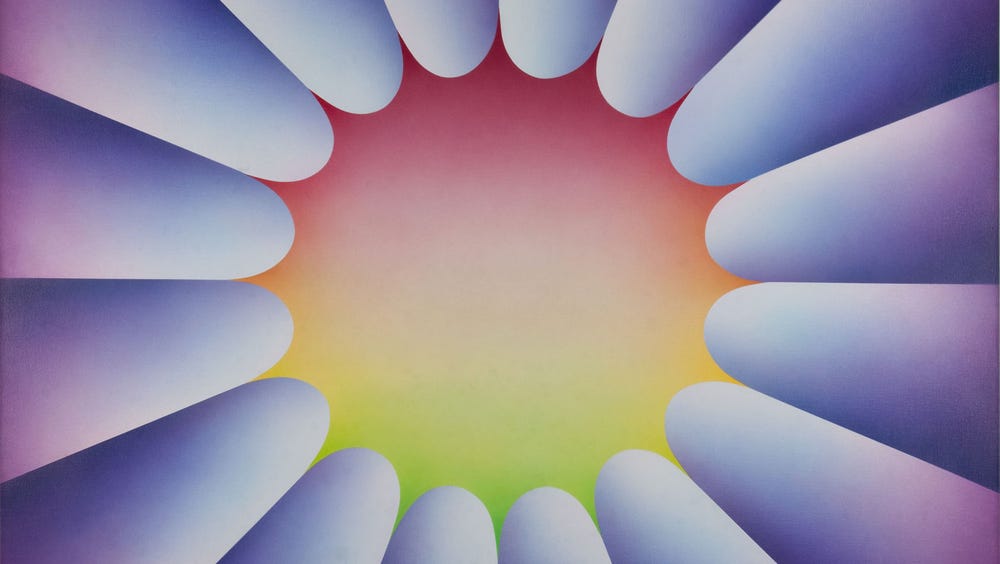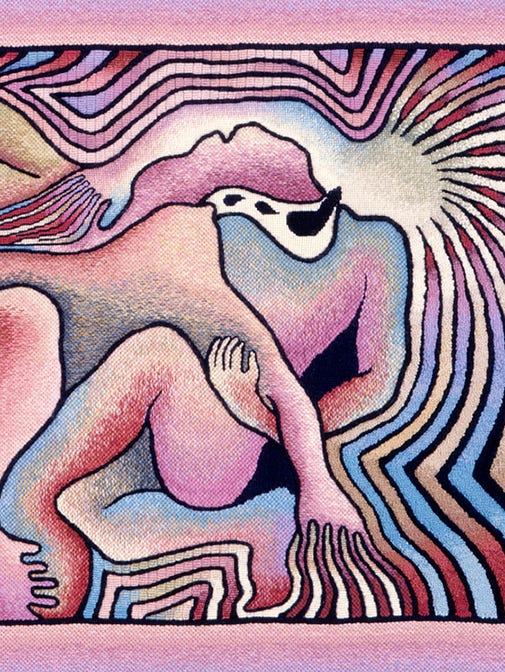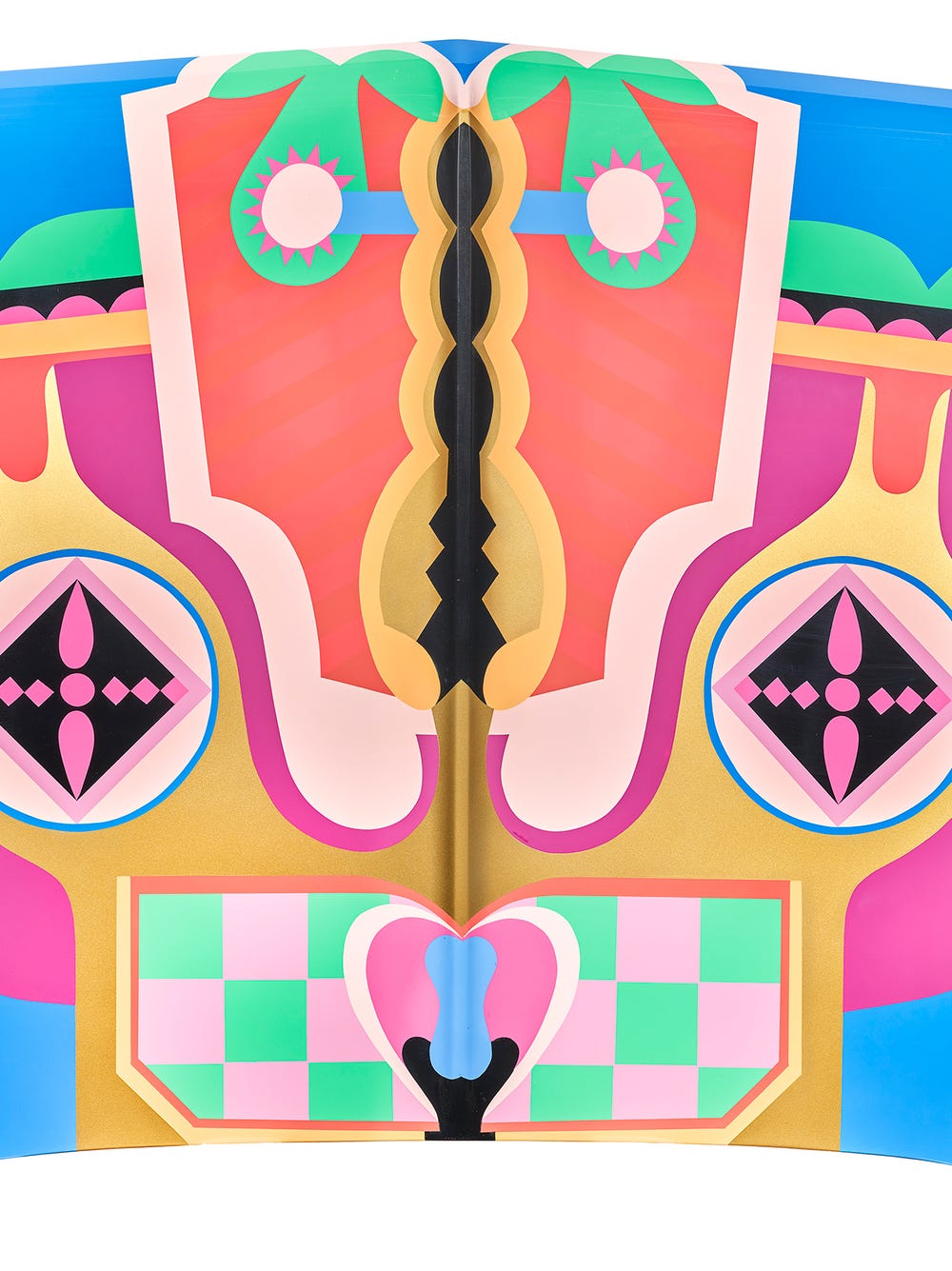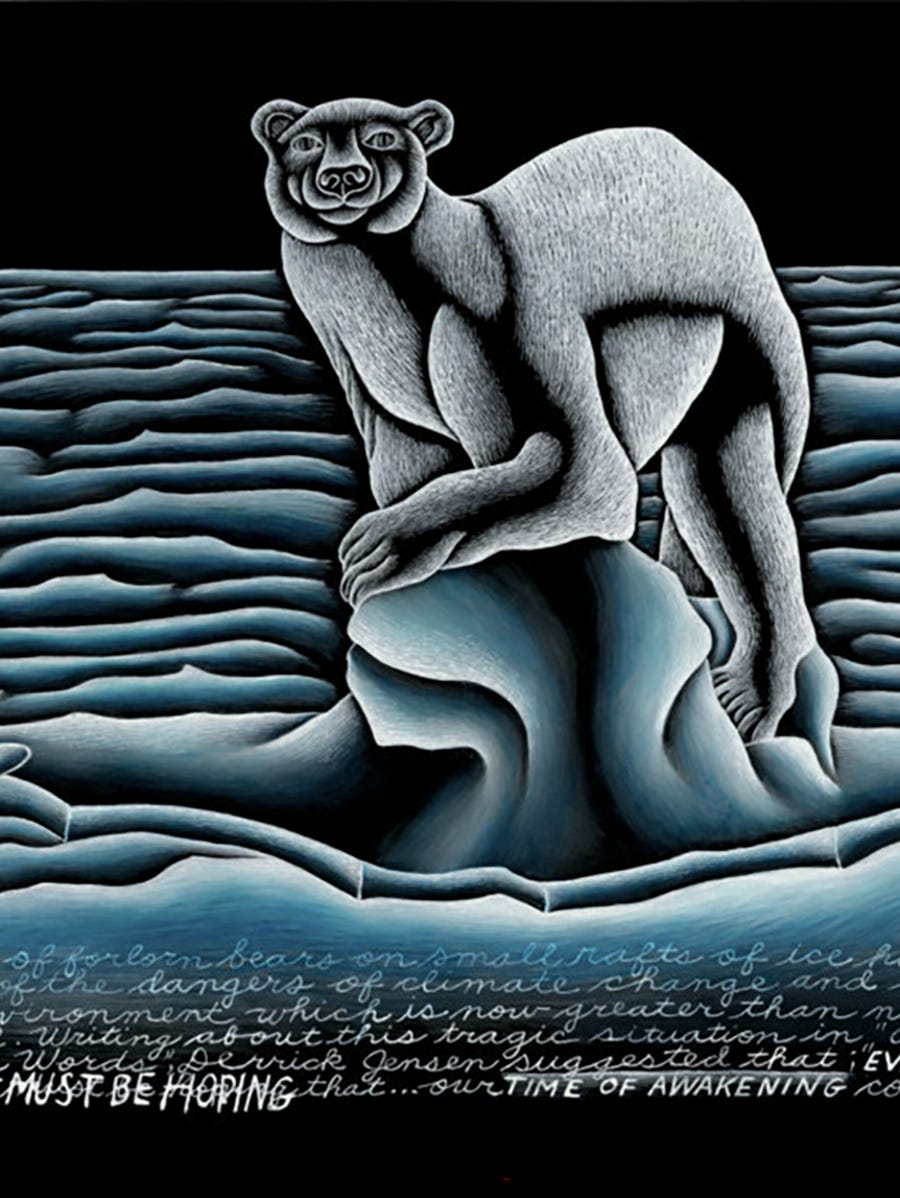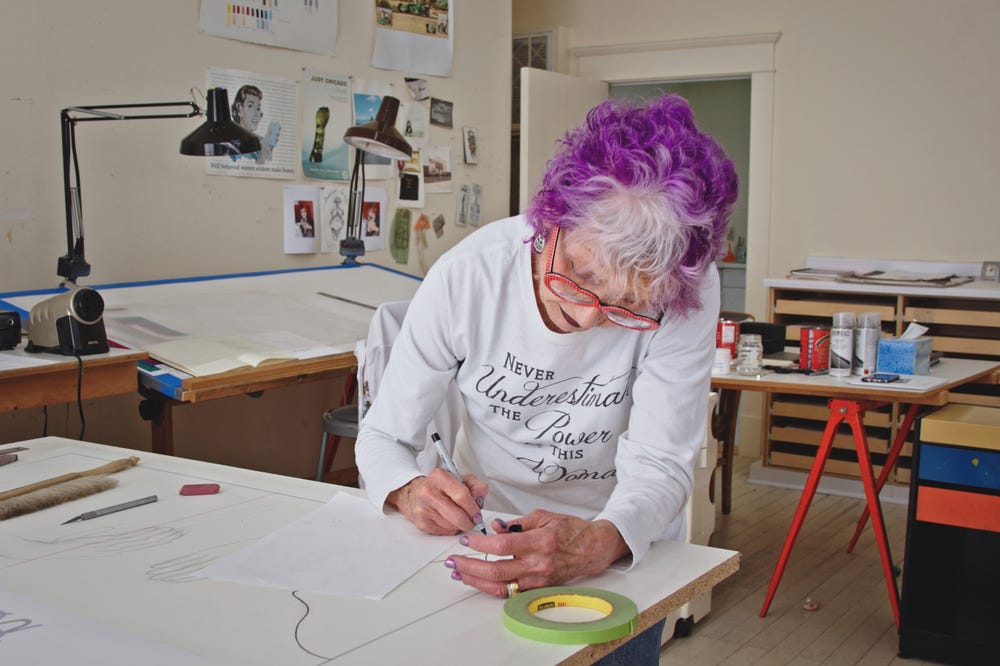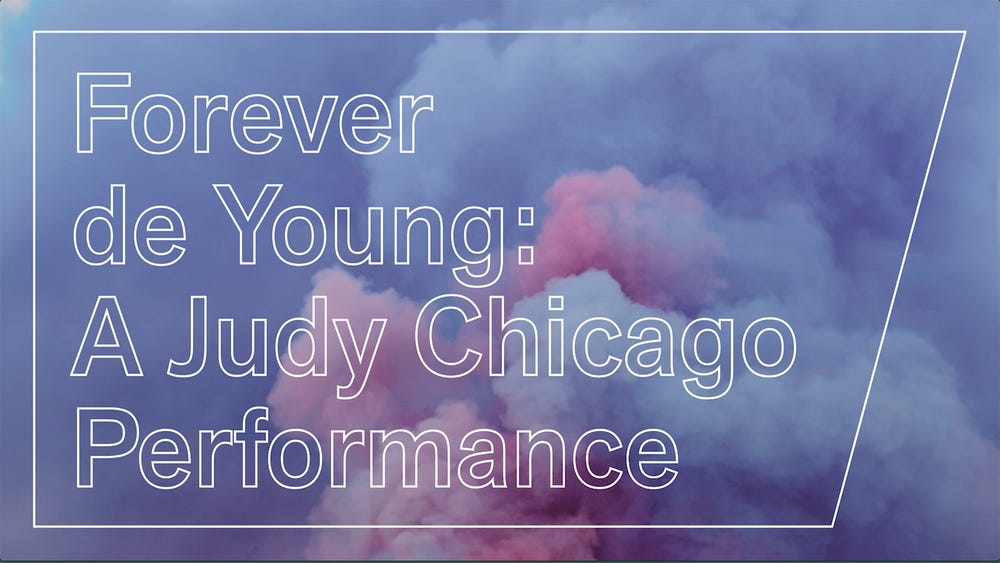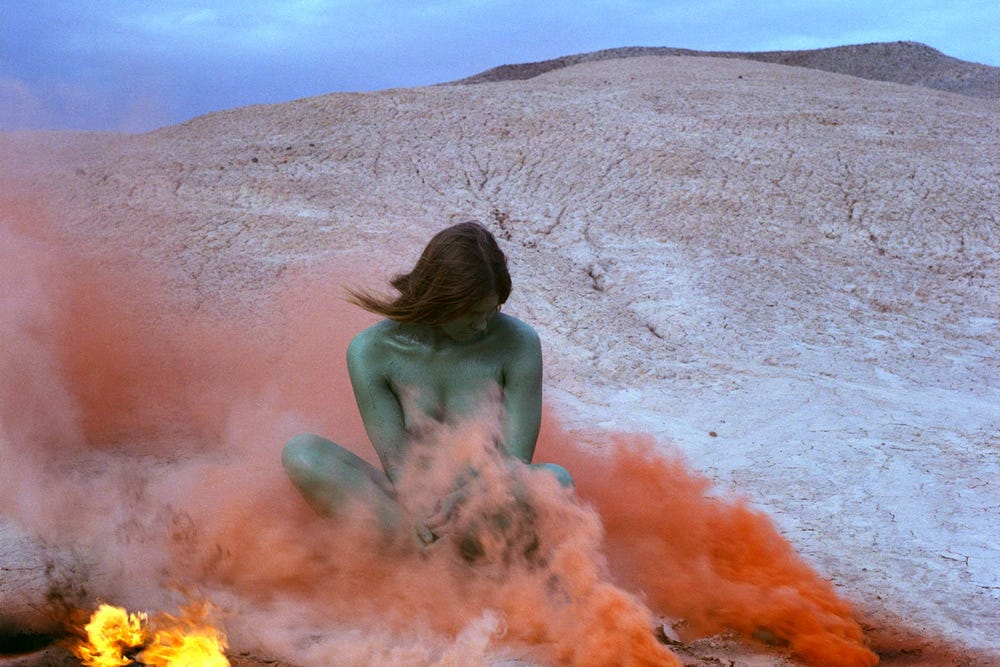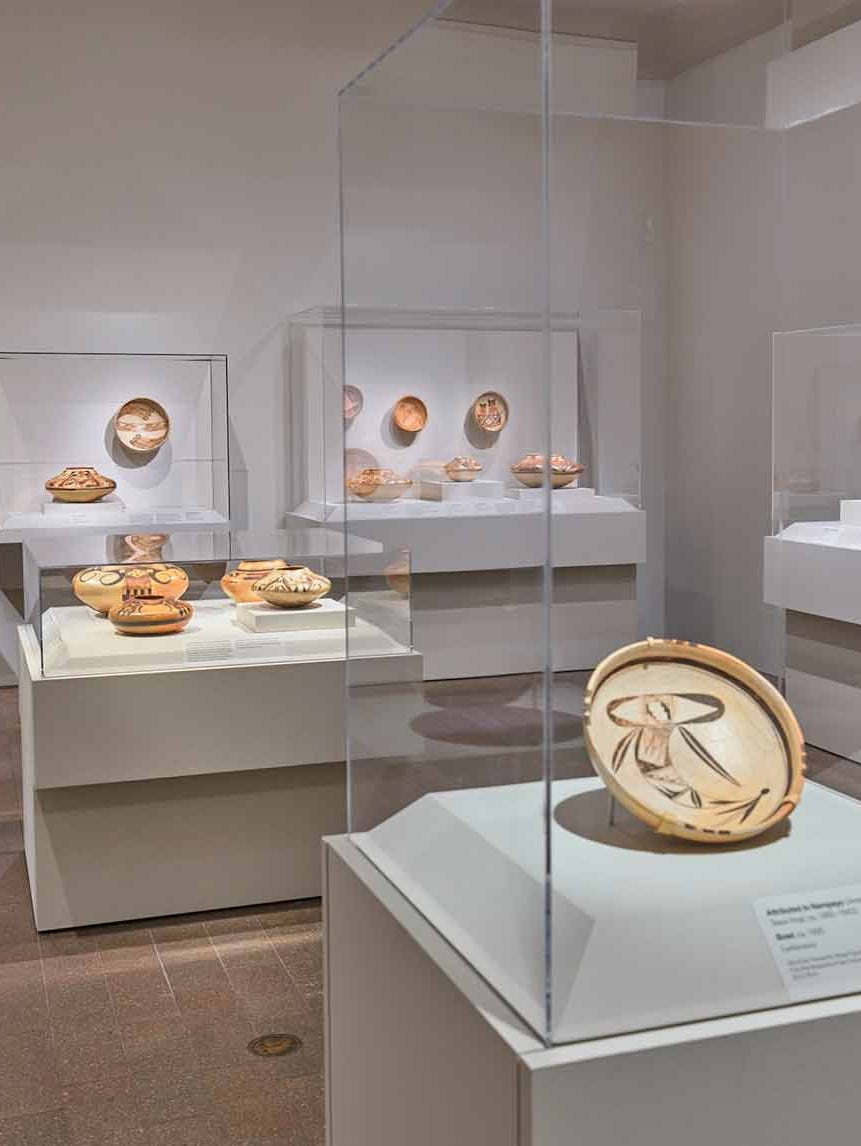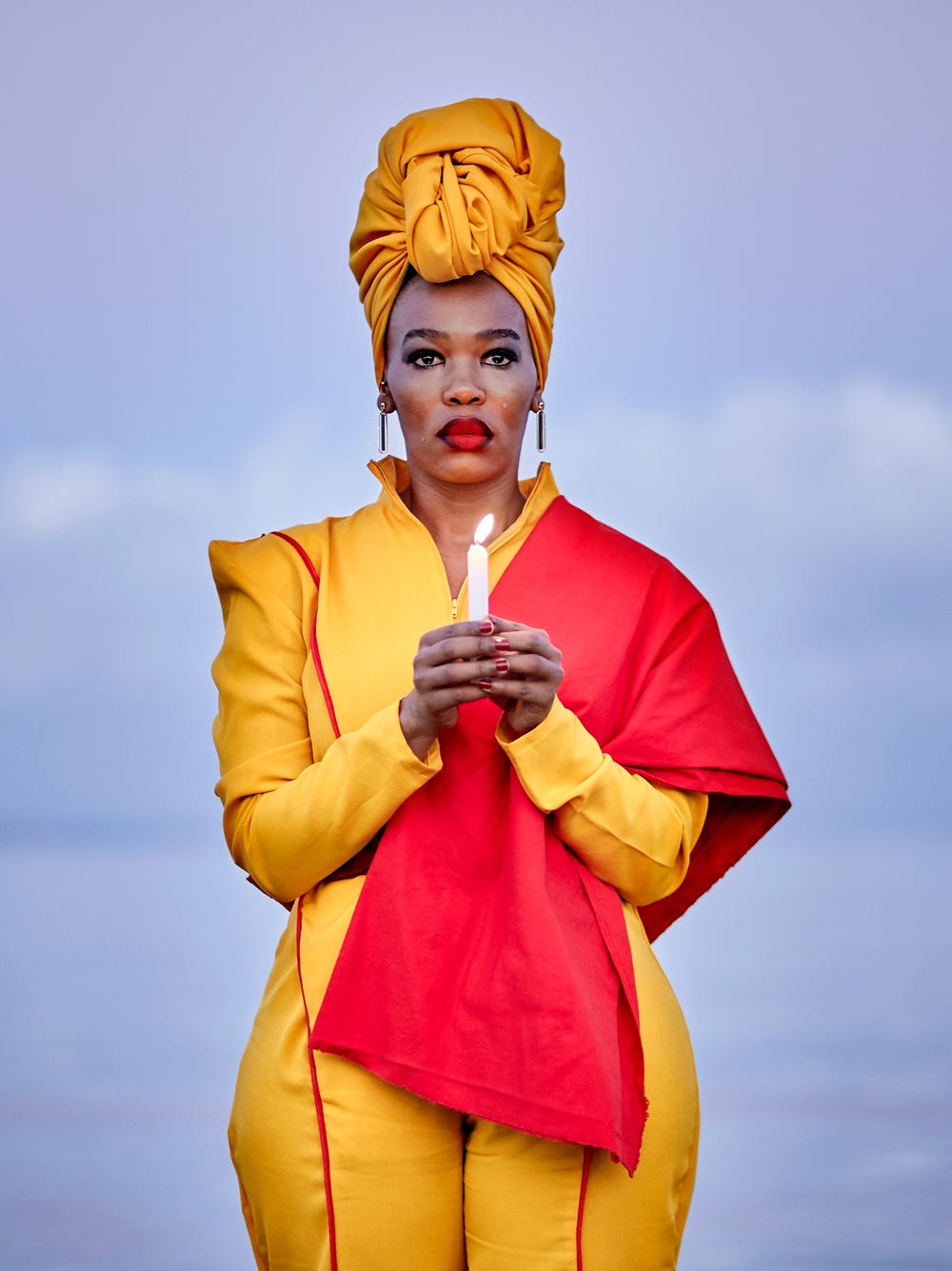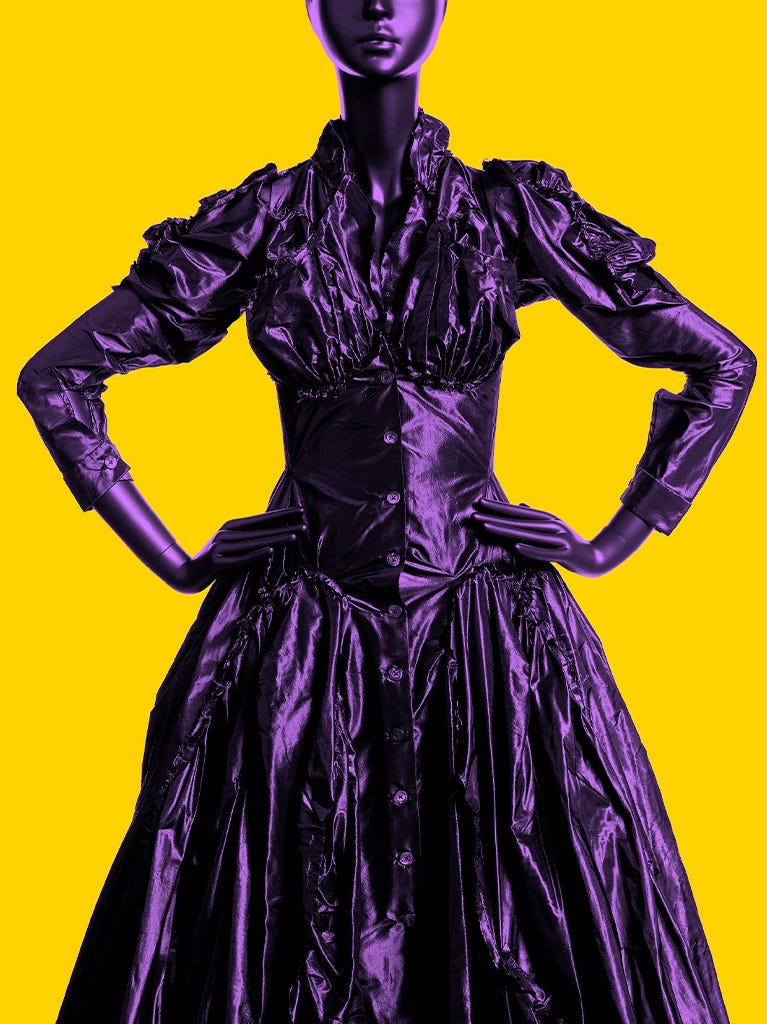Judy Chicago, Through the Flower 2 (detail), 1973. Sprayed acrylic on canvas, 60 x 60 in (152.4 x 152.4 cm). Collection of Diane Gelon. © Judy Chicago / Artists Rights Society (ARS), New York. Photograph © Donald Woodman / ARS, New York
Judy Chicago: A Retrospective
Jump to
The Fine Arts Museums of San Francisco celebrate pioneering feminist artist Judy Chicago with a retrospective spanning from her early engagement with the Californian Light and Space Movement in the 1960s to her current body of work, a searing investigation of mortality and environmental devastation, begun in 2015. The exhibition includes approximately 130 paintings, prints, drawings, and ceramic sculptures, in addition to ephemera, several films, and a documentary. Together, these works of art chart the boundary-pushing path of the artist named Cohen by birth and Gerowitz by marriage, who, after trying to fit into the patriarchal structure of the Los Angeles art world, decided to change her name and the course of history.
Organized on the heels of the 40th anniversary of Chicago’s landmark installation, The Dinner Party, in San Francisco and opening in conjunction with the 100th anniversary of women’s right to vote across the United States, Judy Chicago: A Retrospective pays homage to an artist whose lifelong fight against the suppression and erasure of women’s creativity has finally come full circle.
In depth
In October 1970, Judy Chicago announced her chosen identity with a full page ad in Artforum, divesting “herself of all names imposed upon her through male social dominance.” The same year, Chicago founded the first feminist arts education program in the United States at California State University, Fresno, then instated its second iteration with Miriam Shapiro at the California Institute of the Arts a year later. Their efforts culminated in the establishment of the Feminist Studio Workshop as part of the Women’s Building in 1973, a program and institution that celebrated and nourished the creative growth and recognition of women artists from around the world. With the program thus established, Chicago turned her attention back to her own practice, leaving academia to dedicate herself more fully to researching and surfacing the histories of women in Western civilization and combating the systemic erasure of women’s achievements from (art) historical record.
Monumental in both ambition and scale, Chicago’s installation The Dinner Party was executed with hundreds of volunteers over the course of five years, from 1974 to 1979. Despite its stupendous popular success, it was critically annihilated upon its first exhibition at the San Francisco Museum of Modern Art in 1979 for its celebration of vaginal imagery and embrace of “feminine” craft, and shunned by the institutional art world for most of its existence until its permanent installment as the centerpiece of the Elizabeth A. Sackler Center for Feminist Art at the Brooklyn Museum in 2002. It has since entered the annals of art history as one of the most iconic artworks of its time. While indicative of its uncontested importance, the prolongated and notorious controversy around The Dinner Party, which ended up traveling to sixteen cities around the world thanks to volunteer efforts, has largely eclipsed the work Chicago has created before and since.
The Birth Project (1980 – 1985), following on the heels of The Dinner Party, was a direct response to the absence of imagery related to birthing as one of the most foundational female experiences. Chicago famously said: “If men could give birth, there would be millions of representations of the crowning.” For this project, she again enlisted the help of volunteers, women all over the US, Canada, and New Zealand who specialized in different forms of needlework, and who—working from within the privacy of the homes — contributed their experience and expertise to the realization of the eighty-plus works that compose the series.
With PowerPlay (1982 – 1987), begun during The Birth Project, Chicago shifted her attention from biological to social conditioning, examining gender as a construct couched in ambiguity. A searing portrait of patriarchy’s hunger for power and dominance, her protagonists’ performance of masculinity is inextricably linked to a brutal struggle with their feminine inner selves. The Holocaust Project: From Darkness into Light (1985 – 1993), begun halfway through PowerPlay, extended Chicago’s investigation of the dynamics and manifestations of power beyond societal structures. It marks her first collaboration with her husband, Donald Woodman, their marriage prompting a consideration of her Jewish roots and heritage, which she paid little heed to prior. The result of a charged eight-year investigation that began with the Holocaust but ultimately included genocides around the world, Chicago with Woodman created a haunting body of work combining skirting the limits of our understanding of humanity.
Resolutions: A Stitch in Time (1994 – 2000) offers a hopeful and restorative antidote to The Holocaust Project by revisiting traditional American proverbs to articulate the urgency for inclusive, collaborative social and political strategies to ensure the health of peoples and planets. Combining painting and needlework, Chicago once again worked with a community of women to realize this unapologetically idealistic vision for future forms of coexistence. This desire also pervades — albeit with less hopeful overtones — Chicago’s latest endeavor The End: A Meditation on Death and Extinction (2015 – 2019), where she casts an unrelenting eye on the process of dying on the one hand and the human causes of other species’ extinction on the other.
Judy Chicago: A Retrospective seeks to bring to the fore the continued radicality of Chicago’s practice in terms of both her choice of subject matter and her embrace of media traditionally excluded from the art historical canon, beginning with her investigation of representations of femininity and womanhood. To this day, her art is activist in its foundation. It is an empathetic project driven by the need and desire for social justice and an insistence on aesthetic strategies that don’t require knowledge of art history or critical theory to be legible while being deeply inscribed in both.
By bringing together representative selections of each major body of work as well as select examples of recent portraits in ceramic and glass, along with archival materials elucidating her extensive process of research and development, this exhibition not only is the first to offer a comprehensive overview of Chicago’s career but also reveals the consequence and rigor with which she reformatted and applied formal and conceptual strategies she first developed in response to 1960s Minimalism. Organized on the heels of the fortieth anniversary of the first presentation of The Dinner Party in San Francisco and presented in conjunction with the 100th anniversary of women’s right to vote across the entire United States, Judy Chicago: A Retrospective pays homage to an artist of exceptional foresight and consequence whose lifelong fight against the suppression and erasure of women’s creativity has finally come full circle.
In the news
Stories
Films
Judy Chicago’s multicolored, open-air Atmospheres performance, Forever de Young, took place in front of the main entrance to the de Young museum on October 16, 2021. Hear from Judy Chicago and watch highlights from the performance livestream in this short video.
Gallery
Sponsors
This exhibition is organized by the Fine Arts Museums of San Francisco.
Lead Sponsor
The San Francisco Auxiliary of the Fine Arts Museums
Major Support
The Andy Warhol Foundation for the Visual Arts
Art Mentor Foundation Lucerne
Jordan Schnitzer Family Foundation
Carl & Marilynn Thoma Foundation
Significant Support
Dior
Ray and Dagmar Dolby Family Fund
Generous Support
Jessica Silverman
Merrill Private Wealth Management
Lorna Meyer Calas and Dennis Calas
Salon 94
Turner Carroll Gallery
Additional Support is provided by Leslee and Roger Budge, Tad Freese and Brook Hartzell, The Richard and Peggy Greenfield Foundation, and Chandra and Michael Rudd.
